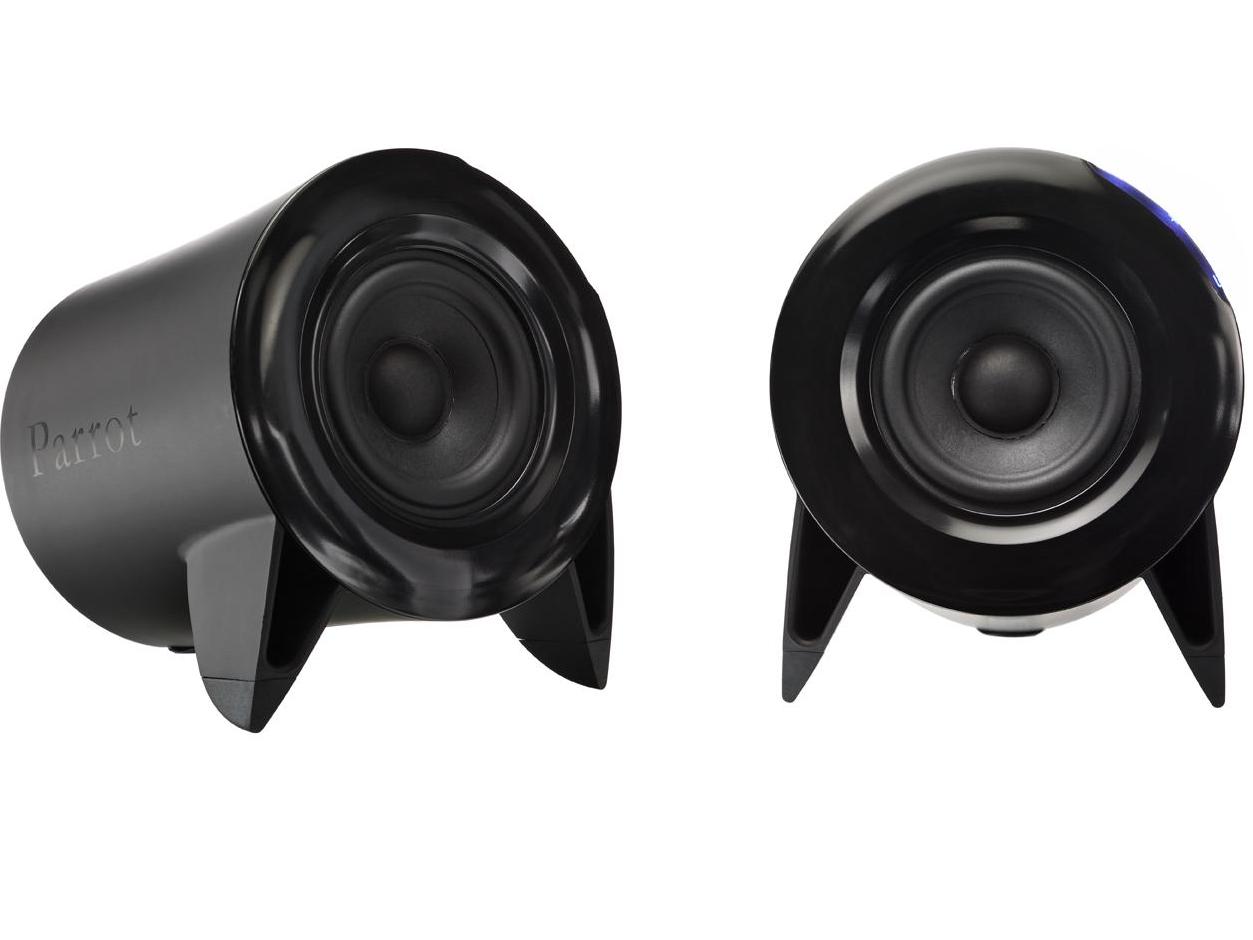TechRadar Verdict
These speakers are great if you want some low-powered Bluetooth speakers in your kitchen - and if you can afford the cash. For everyone else, there are better options out there.
Pros
- +
Good looks
- +
Nice size
- +
Convenient connectivity options
Cons
- -
Very expensive
- -
Low quality audio
Why you can trust TechRadar
It’s sometimes very hard to review a pair of low-end speakers. Weighing functionality against audio fidelity is an almost impossible task. And yet that’s what we’re having to do with the Parrot DS1120s.
On the one hand you’ve got a pair of speakers that barely scrape together 30W of power between them. On the other, you’ve got the convenience of being able to synchronize them with any Bluetooth media player in order to playback music. It’s a hard call to make.
So let’s get this out of the way right off the bat - the Parrot DS1120 speakers don’t sound great. If you’re used to a 500W hi-fi set-up in your living room, these are going to sound absolutely terrible. However, it’s all relative. And so if you’re more used to the small speakers on your digital radio or the stereo in the kitchen, these will sound pretty cool.
Swings and roundabouts
So now we’ve got that cleared up, we can move on to the DS1120’s main functionality – Bluetooth streaming. You can pair them with your phone, or your PC or even your MP3 player as long as it’s got built-in Bluetooth connectivity.
And as you’d expect from a Parrot product, it works pretty well, too. To test we used a Sony Ericsson K850i mobile phone. We tapped the Bluetooth button on the side of one of the speakers, and then ran a search on the phone, and the Parrot speakers appeared immediately. A quick tap of the ‘pair’ button later and the devices were all synched up and ready to go.
From then on, any music played on the phone is streamed directly to the speakers. And considering the small size and the low-power of the speakers, they don’t sound too bad. It’s all squashed into the midrange, there’s not much bass and the high-range cymbals are severely blunted, but in general the audio is clear and undistorted at low volumes.
Freedom of movement
One of the cool things about these speakers is that they aren’t tied together. You can plug them into different power sockets at different ends of the room and yet they’ll still synch up with each other and your device. That way you can create a bigger soundstage than your radio ever could.
The set also has a 3.5mm line-in port so you can plug a device directly into them (like your TV for instance) if your audio device doesn’t have Bluetooth.
So we’ve covered quality. And we’ve done functionality. So what about price? The price is where it all comes tumbling down, unfortunately. Because while these speakers are pretty cool, the £160 asking price seems rather steep.
Very expensive
For instance, you could buy a set of the brilliant Acoustic Energy Aego-M 2.1 speakers for £120. Those speakers leave the Parrots trailing far behind in the dust in terms of audio fidelity, and also have a total output (including subwoofer) of 90W – that’s three times the power of the Parrot DS1120.
So really, these speakers are only for you if Bluetooth compatibility is what you need as a primary concern. If you’ve got loads of music on your phone and you’d like to be able to listen in the kitchen without plugging anything in, these are for you.
However, if you’ve got a good ear and can tell when music is sounding a bit rubbish, and if Bluetooth isn’t the main concern, you should navigate a wide berth and go for something else (those Aego-M’s are highly recommended).
All in all then, not a bad product. But the price will keep these speakers from going mass market. Especially considering the fact that as audio devices, they’re pretty poor.
James was part of the TechRadar editorial team for eight years up until 2015 and now works in a senior position for TR's parent company Future. An experienced Content Director with a demonstrated history of working in the media production industry. Skilled in Search Engine Optimization (SEO), E-commerce Optimization, Journalism, Digital Marketing, and Social Media. James can do it all.

